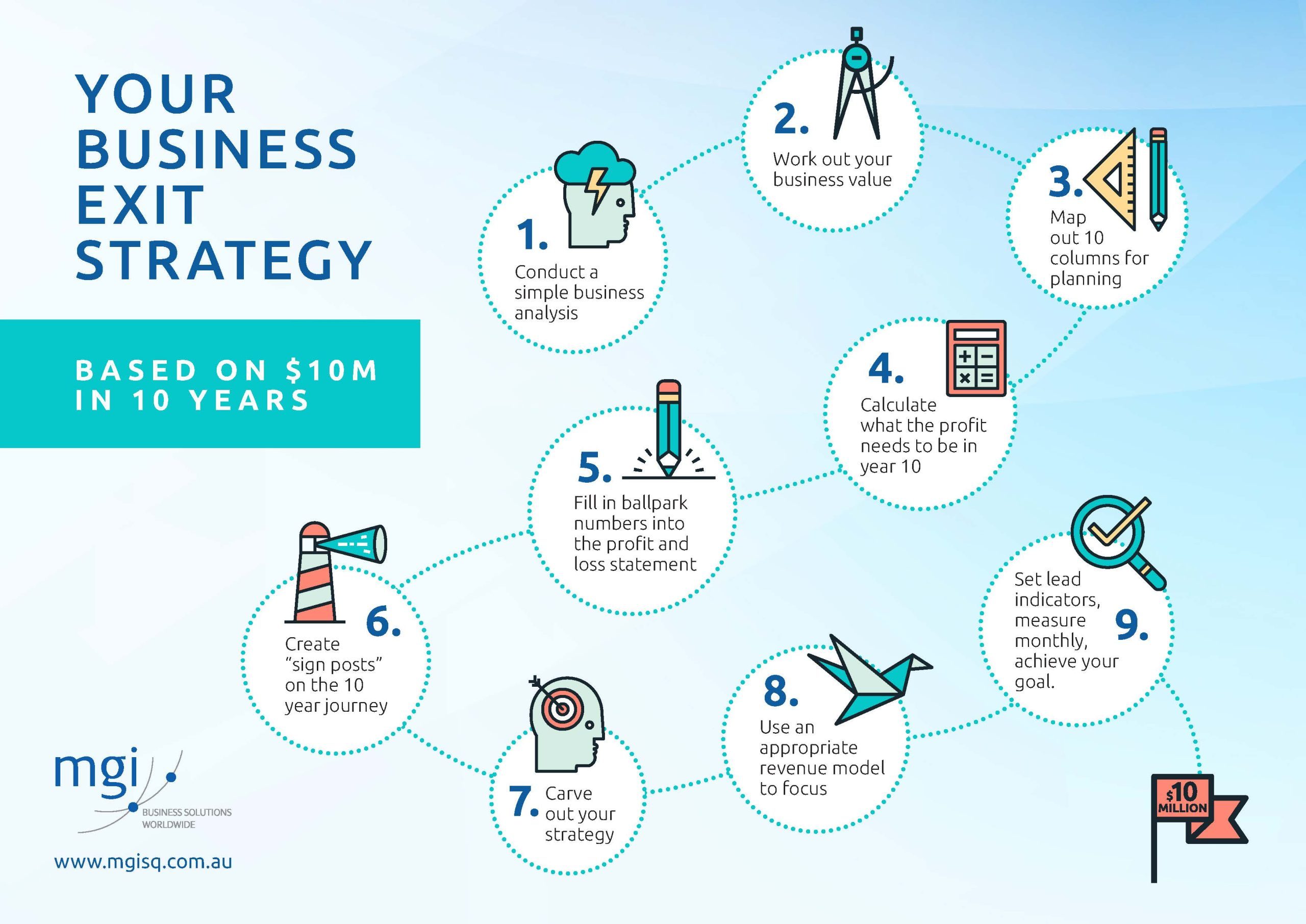In business management guru, Stephen Covey’s, best-selling book, The Seven Habits of Highly Effective People, beginning with the end in mind was a top habit of his. This got me thinking. Why is it that so many business owners don’t have a clear picture of what they want their business to look like when it’s ‘done’?
Covey’s habit is based on the ability to envision what you can’t presently see with your eyes. He believes in the principle that all things are created twice – once in the mind (the first creation) and once physically (the second creation).
So with this theory in mind, if you can’t visualise how your business will look at the end then you can’t make it happen.
I often ask my client’s one question: When do you intend to exit your business and how much cash do you want to walk away with?
A typical answer might be: “I want to sell my business for $10m in ten years.”
Below I have outlined what steps you can take to help power you though to the end zone.
- Conduct a simple analysis and look at what the business is currently worth and how much work needs to be done to achieve the $10m payout in ten years’ time.
- If the business is currently worth only $1m then there is significant work to be done. However, at least we have identified the end point. Mathematically, there are only two variables in working out your business value – your profit figure and the valuation multiple. The valuation multiple is simply a measure of risk; the less risky you make your business, the higher the multiple
- Map out ten columns on a page. In the first column set out the profit and loss statement for the current year, the current valuation multiple and the current business value. In the last column is the goal e.g. $10m in ten years.
- Back fill a potentially achievable valuation multiple and work out what the profit needs to be in year ten. Ideally, the valuation multiple should be greater than the one used in year one because you should be trying to reduce the risk for a potential buyer over the ten years. For example, if the valuation multiple is four then the profit needs to be $2.5m to get the $10m business value.
- Then fill in some ballpark numbers into the profit and loss statement –what sales will be needed to arrive at a $2.5m profit? What gross profit margin am I likely to be achieving and what are my expenses likely to look like?
- Do the same in columns three, five, and eight. These create “sign posts” on the ten year journey and there’s now an indicative profit and loss statement that you know you must achieve in order to reach the ten year goal (walking away with $10m).
- Once you’ve got your “sign posts” flagged on your journey, you can then drill this down to strategy i.e. what needs to be done in order to bring about the required change?
- Use an appropriate revenue model to focus on building the top line sales for example, Revenue = Number of Customers x Transaction Frequency x Average Dollar Sale. In order to grow the top line you’ll need to work on each of these three variables.
- What are your strategies to increase the number of customers?
- What are your strategies to increase transaction frequency?
- What are your strategies to increase the average dollar sale?
- Even small, incremental changes in each of these can have a compounding impact on revenue growth. Set lead indicators to measure and manage the activities that you’ve implemented to achieve the required increases in the above three variables. Unless you’re measuring and managing these activities on a regular basis (e.g. monthly) you’re unlikely to achieve them.
The challenge for many business owners is that they are too busy doing it, doing it, doing it – working in the business, not on it.
In my experience, the businesses that have had the most success at reaching their “end in mind” are those that have engaged someone outside of the business to meet with them on a regular basis to ensure they remain on track – to turn up the heat when things aren’t happening.
The choice is yours. More of the same or begin with your end in mind and achieve your dream.
